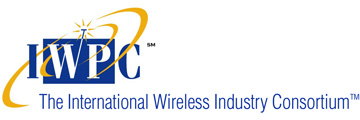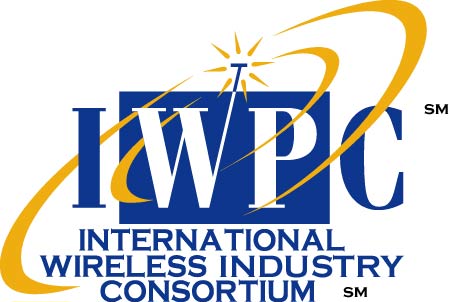4G/5G Multi-Band, Multi-Mode User Equipment
Addressing LTE and 5G <6GHZ and mmWave co-existence, UE RFFE and antenna challenges. Exploring AI and machine learning in UEs as well as demands for critical communications.
Hosted by:

When
September 30-October 2
Introduction
Sub 6GHz will continue to be the critical connectivity bands for mobile devices and remain hugely important, even when mmWave integration challenges are overcome. According to recent analyst reports, the millimeter-wave market for RF front end components will grow to more than $1B by 2024, driven by smartphones, hotspots, and fixed customer premises equipment.
This workshop will explore how 5G will drive replacement of smartphones and add new low/mid bands and growth in complexity. How will 4x4 MIMO drive additional RF content in handsets? What impact will Carrier Aggregation have on already complex RF filter assemblies? Will 5G mm-wave be significant, whether in smartphones or in hotspots/tablets/CPEs?
Understanding how new technology innovation such as Thin-Film SAW (Piezo on Insulator) and RF Artificial Intelligence will impact change in the future of the RF market. Assessing future tuning and optimization of the RF front end and modem and RFFE interfacing.
Workshop Goals
This Workshop will explore how 5G will drive new technology innovation in User Equipment.
- Explore 5GNR Device Architecture, Implementation and Long Term Research
- Assess 5G deployment options/status/lesson learned/evolutions
- Address 5G device challenges identified from 5G trials and deployments
- What sub 6GHz and mmWave bands will 5G smartphones support?
- Assess what will be needed t take 5G to the masses via the "mass-tier"
- Understand how multi-band design challenges and interference mitigation can be overcome
- Explore 4G/5G co-existence in User Equipment
- Understand RF Transceiver and RF Front End design challenges
Agenda
|
DAY 1 Monday 7:00 PM |
Evening Reception & Registration |
At Hotel |
|
DAY 2 Tuesday 7:00 AM |
Breakfast |
|
|
8:00 AM |
Welcome and Introductions
Host Introduction and Keynote
|
5GNR Device Architecture, Implementation and Long Term Research
LMTS
|
|
10:00 AM |
Networking Break |
|
|
10:40 AM |
Carrier Perspectives
|
Network Considerations for 4G/5G Multi-Band/Multi-Mode Deployment
Technical Director
Thermal Challenges, Mitigation Plans, Opportunities for Improvement
PMTS
|
|
12:00 Noon |
Networking Lunch |
|
|
1:00 PM |
System Perspectives
|
RF Design Challenges, Considerations and Opportunities
PMTS
Ways to Build a 5G Handset RF Front End
Principal Technology Strategist
The "X-Factor" for UE's
Director, 5G Business Development
|
|
3:00 PM |
Networking Break |
|
|
3:40 PM |
RF Front End Perspectives
|
Challenges and Solutions for LTE Re-Farming to 5G NR
Director, Systems Engineering
5G filters for sub-6GHz
Senior Director, Product Management and Director, System Engineering
|
|
5:00 PM |
End-of-Day Panel Session |
|
|
5:45 PM |
Adjourn |
|
|
7:00 PM |
Networking Dinner at Steiner Ranch Steakhouse |
|
|
DAY 3 October 2 Wednesday 7:00 AM |
Breakfast |
|
|
8:00 AM |
Technology Enablers
|
Connected Cars
PMTS
Simultaneous power efficiency, bandwidth efficiency and spectrum efficiency: a new paradigm for UE Scope
CEO
Silicon and Non-Silicon Technology for 5G
RF Business Development Director
|
|
10:00 AM |
Networking Break |
|
|
10:40 AM |
Test and Validation
|
Developing Robust and Reliable Multi-Mode User Equipment for 5G
Application Engineering Manager
UE beamforming measurements and Protocol Considerations
Technology Manager, Wireless
|
|
12:00 Noon |
Networking Lunch |
|
|
1:00 PM |
Test and Validation, continued |
Spectrum Sharing in NR - Evolution of Spectrum Sharing from LTE to 5G NR rel 15-rel 17
Senior Business Development Manager
|
|
1:40 PM |
Technology Enablers, continued
|
Broadcast: Value, Use Cases and Evolution from 4G to 5G
Telecom Market Product Director
|
|
2:20 PM |
mmWave Integration
|
5G NR mmWave: Field Test Results
LMTS
|
|
3:00 PM |
Closing Discussion |
|
|
3:30 PM |
Adjourn |
FAQs
- What is the deadline for presentation/handout materials?
- Who are the attendees?
- What are the costs/registrations fees?
- Hotel information?
- What are the travel options from the airport to the hotel?
- Are there any audiovisual requirements?
- Will business cards be collected?
- What is the dress code?
- How will handout materials be provided?
- What is the deadline for
presentation/handout materials?
Deadline for electronic version of presentation/handout materials: Monday, September 23, 2019
- Who are the attendees?
- We do not permit the Press.
- We do not permit Analysts.
- We do not permit Consultants.
- We do not permit 3rd party sales reps.
- We only permit "first hand knowledge experts" in business and technology issues, prepared to contribute to the discussion.
- What are the costs/registrations fees?
ALL Hosts, Speakers, Panel Members and Attendees will be asked to cover out-of-pocket workshop costs such as conference room costs, food (Social Reception plus First Day breakfast/lunch/dinner plus Second Day breakfast/lunch plus Breaks), audio/visual costs, etc.
These costs will be $998 (USD) per person. (For IWPC Members only.)
ALL Hosts, Speakers, Panel Members and Attendees will be asked to pay this fee in advance with either Visa, MasterCard, American Express, cash, personal check or business check. Make checks payable to IWPC.
- Hotel information?
Omni Austin Downtown
700 San Jacinto at 8th Street
Austin, TX 78701
Phone: +1 (512) 476-3700
Hotel WebsiteThe IWPC room block rate is $259/night. The deadline for hotel reservations is Monday, September 9, 2019. After that date, rooms cannot be guaranteed at the IWPC rate. You can make your reservations at Book your group rate for IWPC Austin 2019.
- What are the travel options from the airport to the hotel?
https://www.omnihotels.com/hotels/austin-downtown/property-details/directions
- Are there any audiovisual requirements?
A Computer Projector will be available for the speakers.
In addition, we audiotape all presentations and the interactive discussions. Post workshop, presentations are made available to IWPC Members on the IWPC WEB site, along with “recordings” of all presentations and panel sessions.
- Will business cards be collected?
Business cards will be collected at the door from all attendees. We will make copies of these cards, which will be available to all who provided a business card.
- What is the dress code?
Business casual suggested. No ties, please!
- How will handout materials be provided?
For ALL IWPC members:
All IWPC members are invited to submit materials to be included in the online workshop folder in the IWPC Research Library. This should NOT BE SALES MATERIALS. Rather, we suggest it contain technical information about your technology as it relates to the workshop topics.
For all companies who will be making a presentation at the Workshop:
You are invited to submit an advance copy of your presentation, complete with graphics and illustrations.
These materials will be included on the IWPC website Research Library.
Please submit these materials either by email, as a Word for Windows file, Power Point files or PDF files.
- Go to www.iwpc.org
- Click on IWPC Activities Tab
- Under Workshop: 4G/5G Multi-Band, Multi-Mode User Equipment
- Click on Submit Presentation Proposal. Complete the form and attach your presentation.
- Once we receive your presentation we will send an email confirmation.
AS BACKUP, PLEASE BRING AN ELECTRONIC COPY USB STICK WITH YOU!







